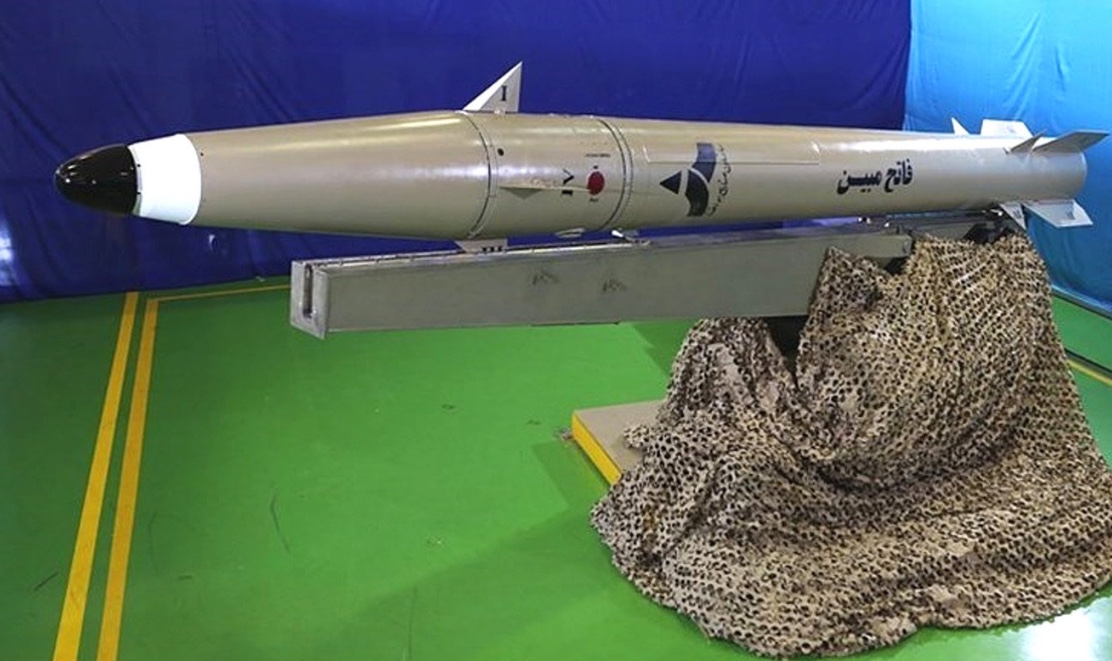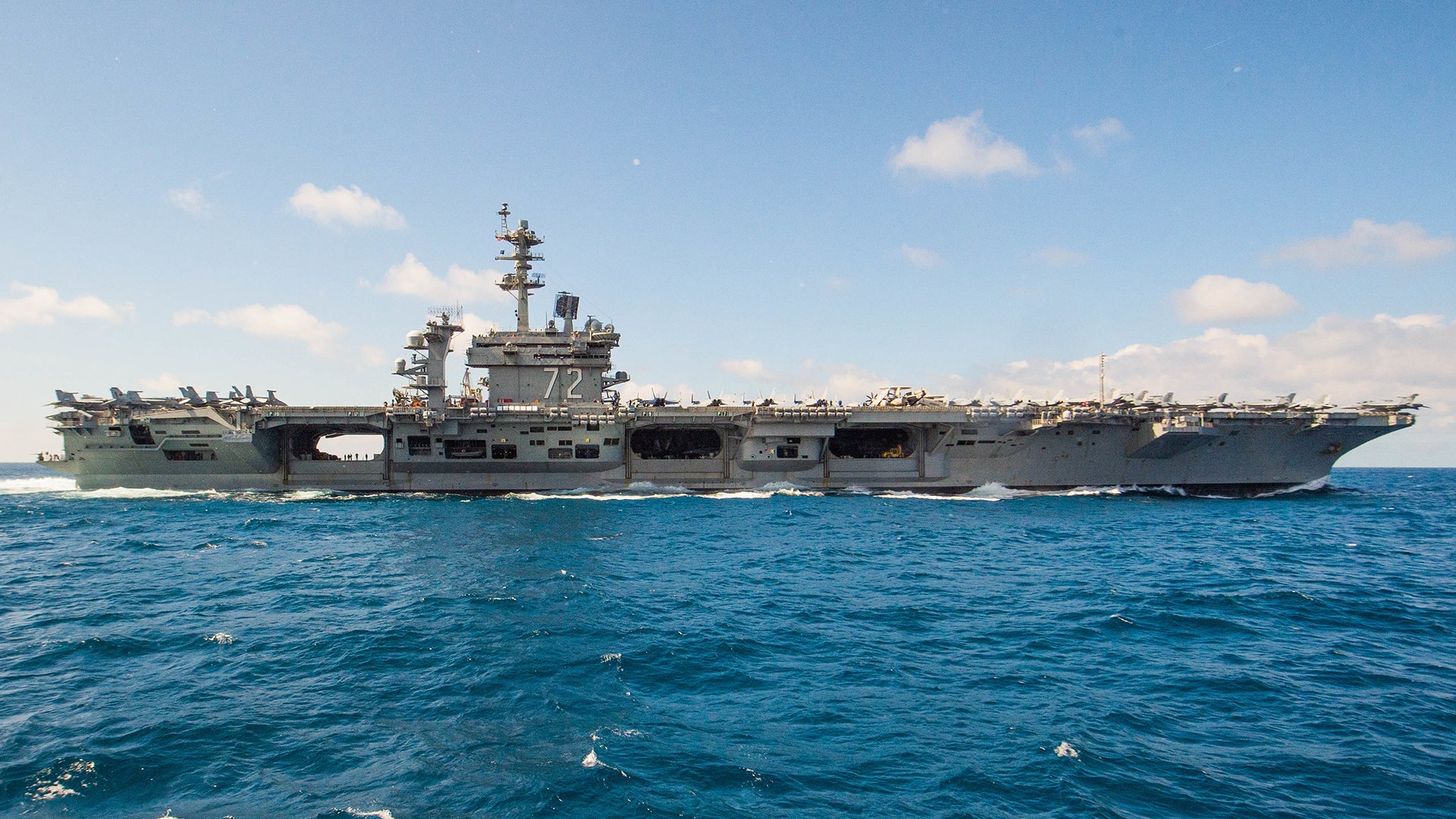To call the events of the last 48 hours peculiar would be an understatement. After the White House released a statement, from National Security Advisor John Bolton of all people, about repositioning a carrier strike group and redeploying strategic bombers to the Middle East in response to some nebulous threat from Iran, additional statements from other officials trying to clarify the original one have offered no additional clarity. In addition, rumors regarding what the supposed threat was from Iran have proliferated without any confirmation of what is actually real. Then, just as Secretary of State Mike Pompeo, who was already in Europe on a diplomatic mission, was supposed to head to Germany, that trip was abruptly canceled without formal explanation and Pompeo’s C-32A aircraft immediately headed south, ending up in Baghdad, Iraq.
Why all the secrecy and unexplained actions? If Iran was planning something or doing something provocative, why not just put them on notice and give the American people the basic details surrounding the issue? The answer to those questions could end up being far more troubling than the reasons for asking them.
We discussed the peculiar nature of the original announcement and the issues surrounding the person who made it on Sunday in a piece you should read here. Since writing that article, the shadows of possible facts have grown longer, but none of them have actually come into the light. There have been claims by a limited number of outlets that Israel provided intelligence—very possibly nebulous in nature—to the U.S. of the possibility of an attack by Iranian forces on U.S. interests in the Middle East. There’s far too little even in terms of conjecture in these reports to score such a possibility as the motive for the U.S. military’s movements and the high-profile nature of the orders that spurred them. Also, it cannot be denied that Israel has its own very serious set of issues with Iran and their motives for conveying such information have to be examined.
As the media questioned the actual reasoning behind Bolton’s fiery deployment announcement, still acting Secretary of Defense Shanahan waded shallowly into the ongoing story by giving up very little in terms of specifics. He stated in a Tweet:
“Last night’s announced deployment of the @CVN_72 and a @USAirForce bomber task force to the @CENTCOM area of responsibility, which I approved yesterday, represents a prudent repositioning of assets in response to indications of a credible threat by Iranian regime forces.
We call on the Iranian regime to cease all provocation. We will hold the Iranian regime accountable for any attack on US forces or our interests.”
Once again, we have zero specifics on what Iran is doing to provoke the United States or what their plans are to attack such a superiorly armed foe.
As for the U.S. bomber deployment originally mentioned in Bolton’s statement, we now know the force will be made up of four B-52H Stratofortresses.
What was one of the more bizarre pieces of this half-finished puzzle was Secretary of State Mike Pompeo’s sudden mission to Baghdad, Iraq. Pompeo’s next stop on his trip to Europe was Berlin to meet with high-ranking German officials. This was abruptly canceled with only a cryptic statement that Pompeo had to divert to another location “due to pressing issues.” Plane trackers followed his C-32A as it seemed to be heading toward Baghdad, where he materialized hours later. A press pool blackout went along with the change in plans.
Pompeo said that the motive behind his trip was due to the same intelligence that the administration has been vaguely referencing since Sunday, and that the reasoning for going to Baghdad was as follows:
“To speak with the leadership there, to assure them that we stood ready to continue to ensure that Iraq is a sovereign, independent nation… Certainly, it’s the case that if American interests in Iraq are threatened, it would impact Iraq as well… This would be an effort to take American forces out that continue our campaign against ISIS. It’s incredibly important to the Iraqi government. That campaign to continue to prevent ISIS terror inside of Iraq itself is something that’s very central, central to the Iraqi government… The central messages are this: We want to make sure that Iraq is positioned so that the relationship that we’ve built with them and that our allies in the region have built with them—allies that range all across the Gulf, who understand that the primary threat in the Middle East is Iran—remains strong, that those relationships remain strong.”
This is an interesting set of statements from a guy who just a couple of days earlier said the redeployment of the carrier strike group was in the works for some time. Iran threatening U.S. forces in Iraq seems like a very strange act as Iran enjoys a very good relationship with much of the Iraqi government. Also, the U.S. has repeatedly made similar assertions in years past, but they have never materialized.
Simply put, Iran launching unapproved attacks on U.S. installations in the country, with American troops deployed there at the request of the Iraqi government, and fighting an enemy common among the U.S., Iraq, and Iran, seems very unlikely. Unless, of course, Pompeo was there to reassure that the relationship between the U.S. and Iraq wasn’t about to crumble in favor of a better one between Iraq and Iran. Certainly, this has been a haunting possibility for some time, especially as economic ties between the two neighbors grow deeper.
The U.S. depends more on its bases in Iraq now than it did a handful of months ago, before President Trump ordered the drawdown of U.S. forces in Syria. Trump visited a base in Western Iraq over Christmas that would become far more imperative in handling the situation in Syria after U.S. forces largely vacate the country. Trump also said he wanted U.S. forces there to keep an eye on Iranian activities. Those words angered top officials within the Iraqi government who see Iran as a key ally, not a foe. But it’s glaringly clear that Iran has long pined for a ‘land bridge’ between its own borders and Lebanon, where its Hezbollah proxies’ power continues to grow. Ejecting the U.S. from both Iraq and Syria would go a long way to making this possible.
So whatever Iran is supposedly planning, if they are indeed planning anything at all, maybe it has a larger political influence component than a military one.
On the other hand, if the U.S. was planning on some sort of military action against Iran, trying to see that Iraq wouldn’t immediately side with Tehran and kick every American out of the country would also be an important diplomatic objective, indeed.
Now there are growing rumors that Iran has been spotted moving ballistic missiles by ship to various launch positions around the Persian Gulf and especially near the volatile chokepoint that is the Strait of Hormuz. Even firing the missiles on the boats themselves has been mentioned by “undisclosed sources,” albeit without any credible evidence that this is planned or even possible.
Beyond having a capable, robust, and in many cases highly protected land attack ballistic missile force, Iran has been developing short-range anti-ship ballistic missiles for some time and says it has a real operational capability in this regard. Ballistic missiles that are able to target moving vessels at sea are in many ways harder to defend against than anti-ship cruise missiles, especially due to their high-altitude mid-course stage of flight and high-speed during their terminal phase of flight.

These missiles pose a serious threat to American warships in the confined space of the Persian Gulf, especially when combined with a layered attack that also includes air-breathing anti-ship cruise missiles launched from shore, ships, aircraft, and submarines, as well as swarming small boat attacks, remote-controlled drone boats, and more. The stark truth is that Iran has been training to take out a U.S. aircraft carrier for decades. But actually using these weapons in an attempt to do so is straight-up an act of war—one that Iran is sure to lose against the might of American forces, not to mention their ever more powerful allies that line the western banks of the Persian Gulf.
Iranians are all about signaling and threats—nothing new there at all. But they aren’t suicidal. One of the biggest issues here with these reports is that if they are true, it is a chicken or the egg situation. In other words, is Iran preparing to defend itself from an incoming carrier strike group that has the mandate of threats made by the highest ranking members of the Trump Administration, or was it moving the missiles around before any of this happened? Undisclosed sources from various reports say no it was happening before, but we don’t know that answer for sure, and it is a crucial one to get right.
Even if Iran was moving around ballistic missiles prelude to Bolton’s announcement, how is this really a sign of impending attack? Iran constantly runs elaborate military drills that include deploying various weapon systems to new locations, and often right in the middle of the volatile Strait of Hormuz. They have also been shuttling around ballistic missiles, including to their proxies in Yemen, for years now. More so, tensions are rising with the U.S. over Trump pulling out of the Iran nuclear deal and re-leveraging old sanctions on Tehran that are crushing its economy. Just as recently as today, there have been mixed indications that Iran may pull out of the Iran nuclear deal as the benefits of sticking to it are now questionable at best and place its own ‘reciprocal measures’ on the United States. The outright fiery disdain for the Iranian regime among key officials the Trump Administration is also no secret. So, seeing Iran fortify its defenses and deterrent capabilities in what has always been a major world hotspot and strategic economic corridor isn’t really all that surprising.

So that’s where it stands at this moment. Two days after Bolton’s statement we have more questions and even fewer answers. Within a matter of says, the Lincoln Carrier Strike Group will likely plow its way through the Strait of Hormuz, which will probably the tensest and most heavily surveilled such transit in a long time. But it’s also worth noting that the Kearsarge Amphibious Ready Group is already in the Persian Gulf, so it’s not like the Iranians don’t have a capital ship to harass already if they wanted to. And by all accounts, including the Navy’s own metrics, they have not wanted to at all. The number of times Iran harassed American vessels in 2018 and so far in 2019 stands at zero.
All this has left many wondering if Bolton and Co. may be goading Iran into firing first in order to provide a pretext to give the Iranian regime a ‘bloody nose.’ Bolton has wanted to bomb Iran for various reasons in the past, so this is hardly an absurd proposition.
Hopefully cooler heads will prevail as the last thing the U.S. or the world needs right now is the Persian Gulf turning into a shooting gallery.
Contact the author: Tyler@thedrive.com
